The Awesome Adventures of Captain Spirit Review
July 5, 2018 | 10:00
Companies: #dontnod-entertainment
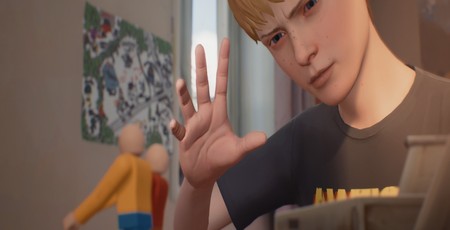
Price: Free
Developer: DontNod Entertainment
Publisher: Square Enix
Platforms: PC, PS4, Xbox One
Version Reviewed: PC
The Awesome Adventures of Captain Spirit is a free, standalone game designed as a warm-up Life is Strange 2 when it launches later this year. Bridging the gap between the first and second seasons of DontNod’s sublime narrative adventure, Captain Spirit tells the tale of nine-year-old Chris, stuck at home with his father over the Christmas holidays.
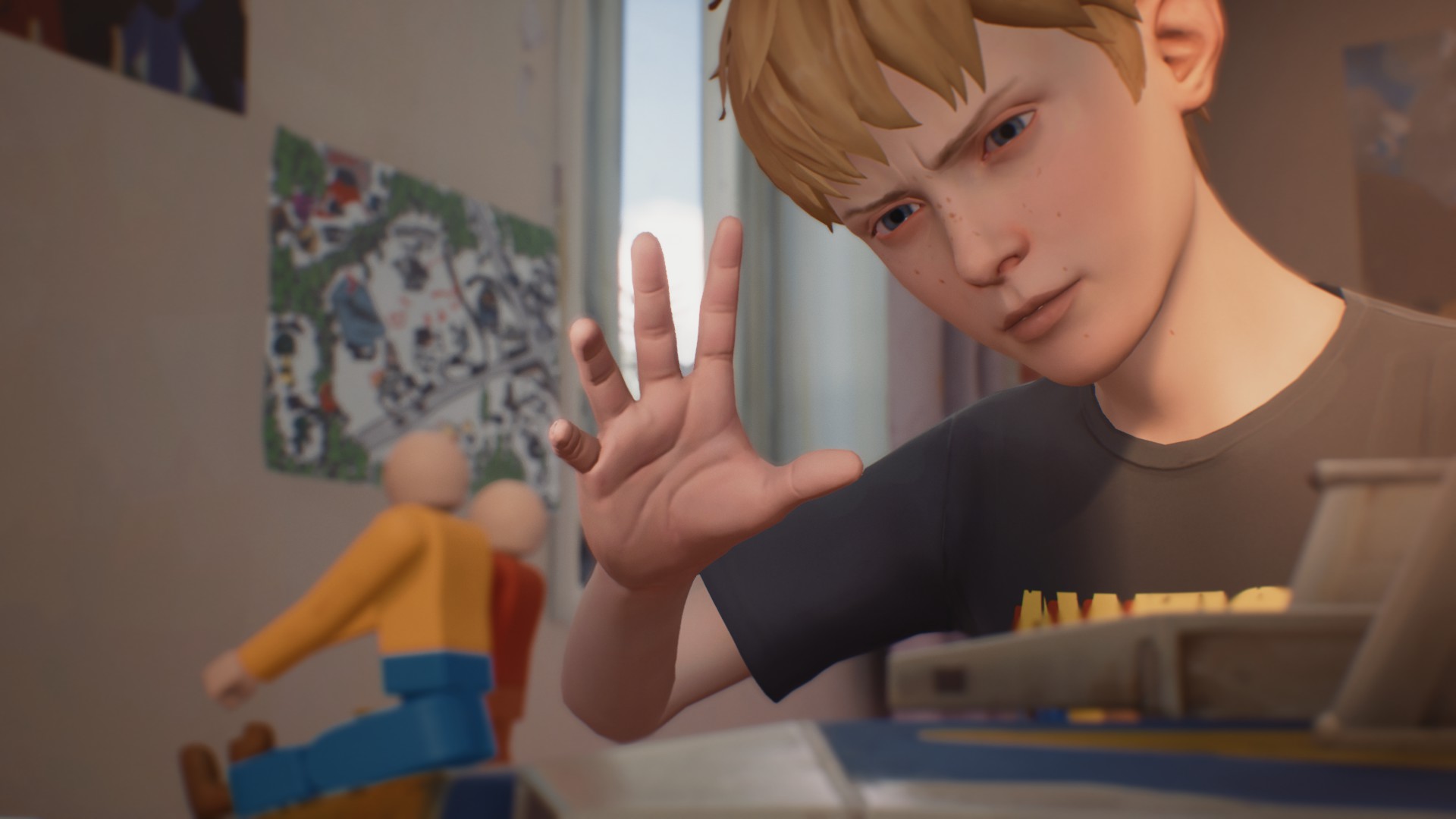
Like Life is Strange, Captain Spirit weaves a story that uses light magical realism to explore darker and more adult themes, albeit from a very different perspective compared to Life is Strange’s adolescent dramas. Despite its brevity, Captain Spirit demonstrates the strongest writing of any of DontNod’s games, although it still has a few clumsy moments, while that same lack of scope also limits the game’s ability to offer the player much agency.
As the game commences, Chris finds himself in the position of many children on holiday, with lots of time on his hands and no clear way to fill it. His best friend has moved to the other side of town, and his dad is watching the basketball on the TV. So he whiles away the time by pretending to be his heroic alter-ego, Captain Spirit, guardian of Earth and bane of evil, particularly his nemesis, the amusingly named Mandroid.
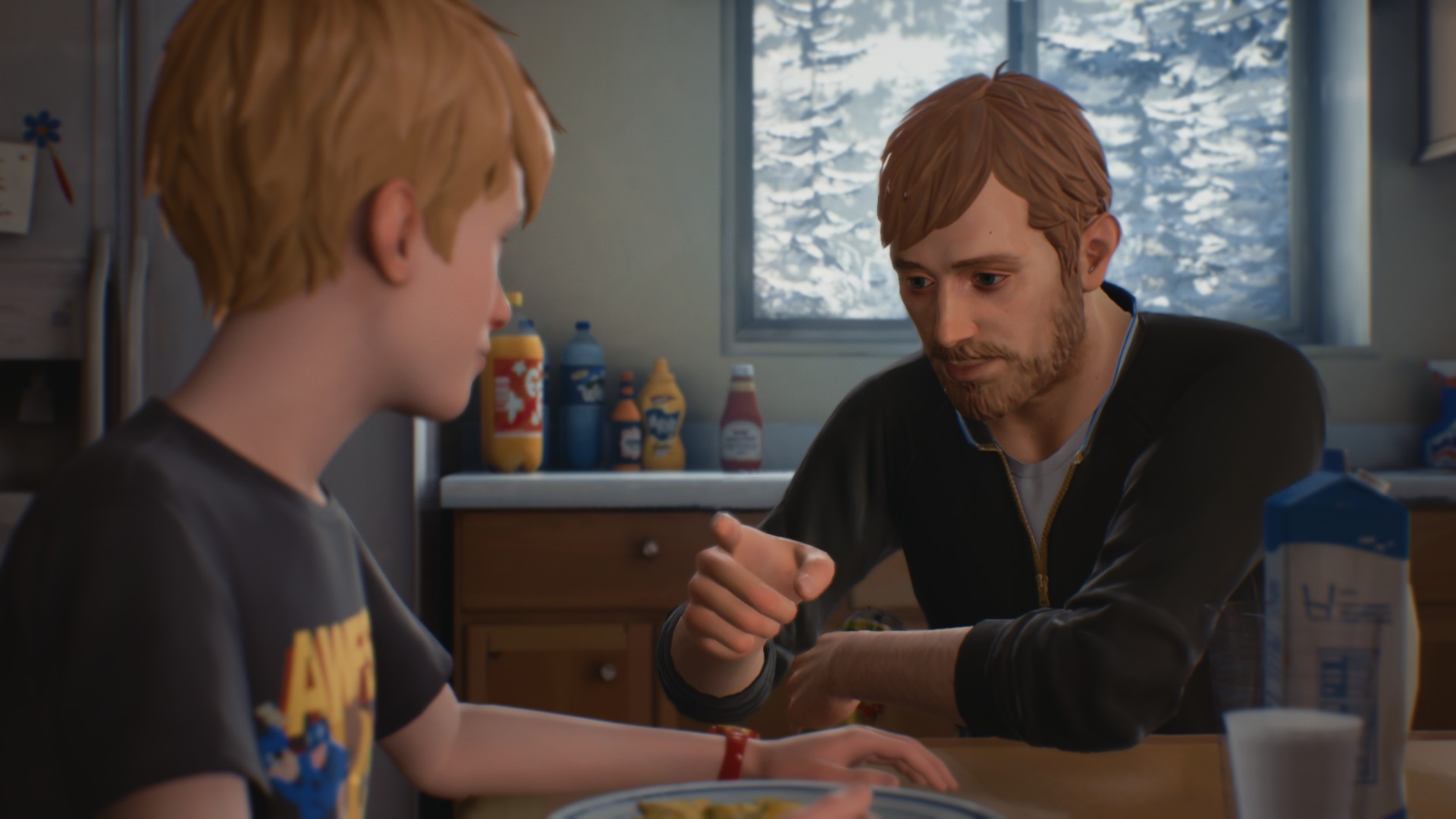
As Captain Spirit, Chris has a created a list of tasks his alter-ego needs to fulfil, and it’s up to you to help him complete them. These include making his Captain Spirit costume, practicing his “special powers” and defeating several of his enemies, which include the house’s gurgling water tank and a snowman outside.
Captain Spirit’s greatest strength is in how it represents the wonder and imagination of childhood. We start the game in Chris’ bedroom, which is jam-packed with toys, doodles, comic books, and so forth. DontNod has a wonderful eye for environmental detailing, and Chris’ bedroom is a great distillation of the idyllic kid’s hideout. Well, apart from the broken games console that his dad hasn’t fixed yet; a neat little detail that feeds into the game’s broader themes.
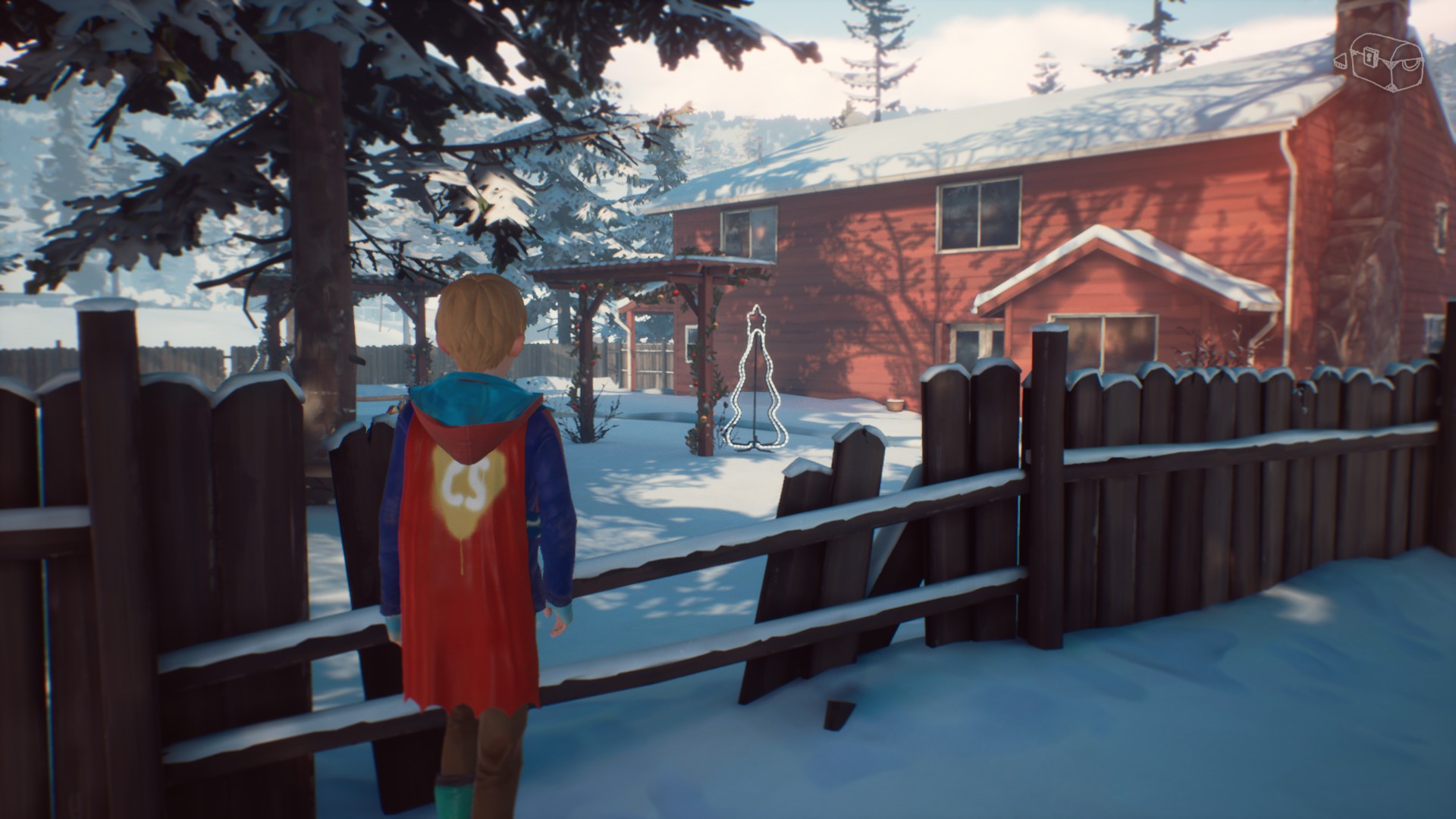
Beyond Chris’ bedroom, the remaining house is drab and muted, and in certain places strange and frightening. Indeed, the game does a splendid job of presenting the world to us through Chris’ eyes. The water cooler is represented as this towering monster with piercing purple eyes, while a pile of junk in the front yard becomes a twisting labyrinth that Chris has to navigate to find his “hidden treasure.” My favourite detail is the wry ambiguity with which Chris' “powers” are communicated. Each time he uses them, whether it’s for switching on the TV or making his toys float, the camera lingers on the object of his focus long enough to make you start wondering whether Chris actually does have special powers, before panning to reveal that he’s actually holding the TV remote in the other hand. Being a Life is Strange game, the possibility of the supernatural always lingers, and Captain Spirit uses this to great effect.
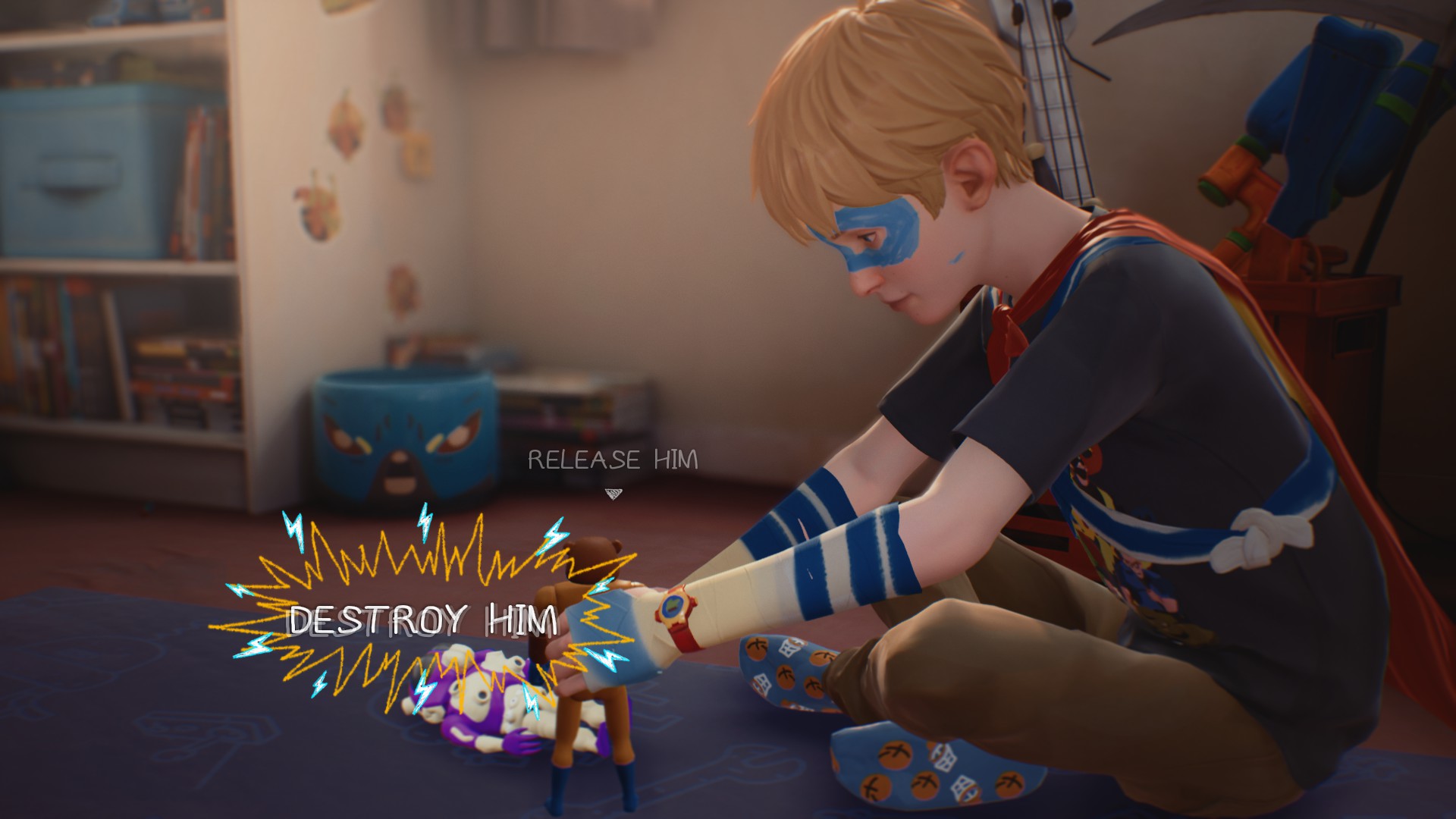
Also like Life is Strange, Chris’ life isn’t all fairy lights and building snowmen. As you explore the house, you’ll begin to see hints of a darker side to Chris’ existence, like the fact that his dad has a beer in his hand while making breakfast, and the notable absence of Chris’ mother. Initially, Captain Spirit handles this stuff well, particularly the breakfast scene which sees Chris’ father clearly attempting parenthood despite an obvious drinking problem. But as the game wears on, these more adult themes are delivered in far more heavy-handed manner, to the point where any sympathy Chris’ dad earned early on had been well and truly spent by the story’s conclusion.
A more substantial issue is the lack of any meaningful player agency. Admittedly, this is partly due to the lack of scope. Where Life is Strange had five full episodes for all its choices to evolve into dramatic consequences, Captain Spirit only has one, and so the narrative runs largely on a single track. One potentially cool feature is the “Spirit Actions”. Alongside Chris’ two main interactions –various forms of “Look” and “Pick up” – the game occasionally offers a third interaction that is “empowered” by Captain Spirit’s abilities.
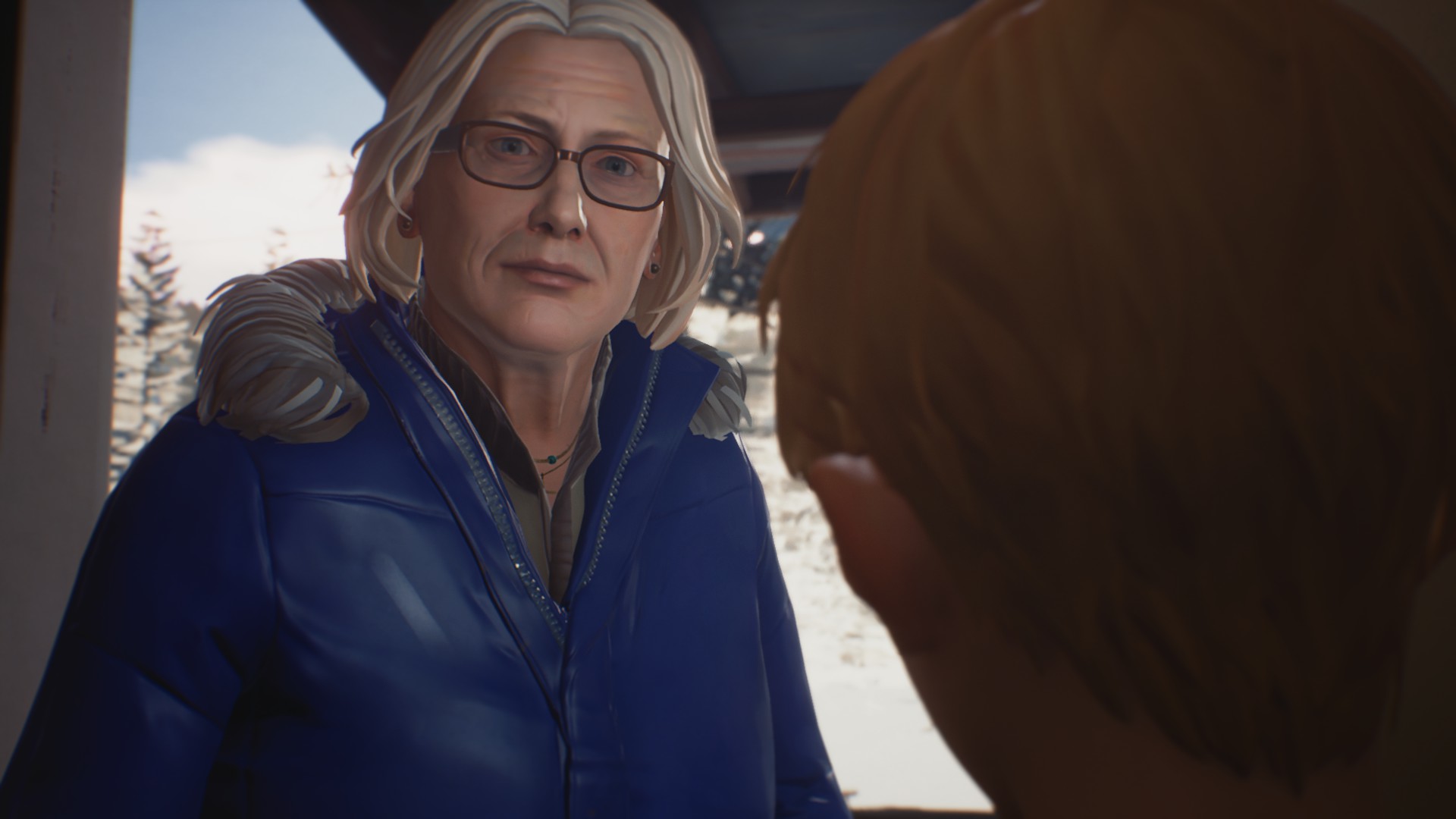
This essentially means Chris performs an action with more skill and/or aggression, such as washing the dishes. This can result in positive consequences, but also trigger negative ones. The upshot of washing the dishes in this way is Chris accidentally breaks a glass, earning the ire of his dad. It’s a neat idea that dares the player to be bolder for the chance of a cooler outcome, but there isn’t really enough room for it to breathe in Chris’ teeny-tiny house.
Finally, Captain Spirit sometimes struggles to make its childhood activities interesting for the player. The game is at its best when asking you to solve basic environmental puzzles, which in turn drip feed you information about his dad’s problems and what really happened to Chris’ mum. When the game asks you to do anything more specific, it falters. The worst example of this is the encounter with the water tank, which basically amounts to pressing one button.
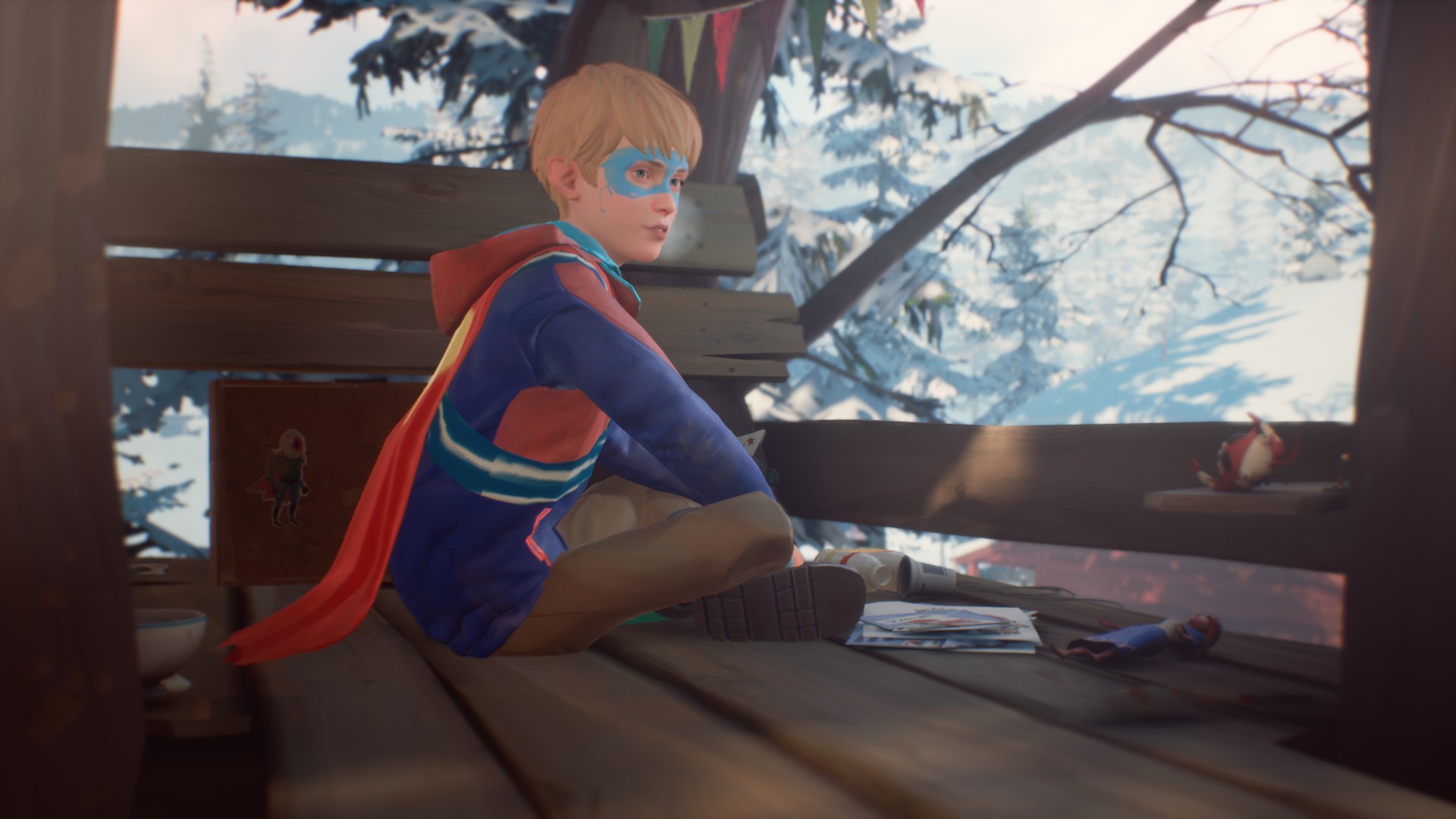
Ultimately though, it feels petty to complain about a free teaser for a much larger meal to come. Given its diminutive size, the Awesome Adventures of Captain Spirit is equal parts a warm and sad adventure that packs a surprising amount of emotional heft, and has me hopeful that a few of the bigger problems with Life is Strange will be addressed in the sequel. It’ll also fit neatly into a single evening without costing you a penny, and you’re unlikely to find a better deal than that this summer.



MSI MPG Velox 100R Chassis Review
October 14 2021 | 15:04






Want to comment? Please log in.